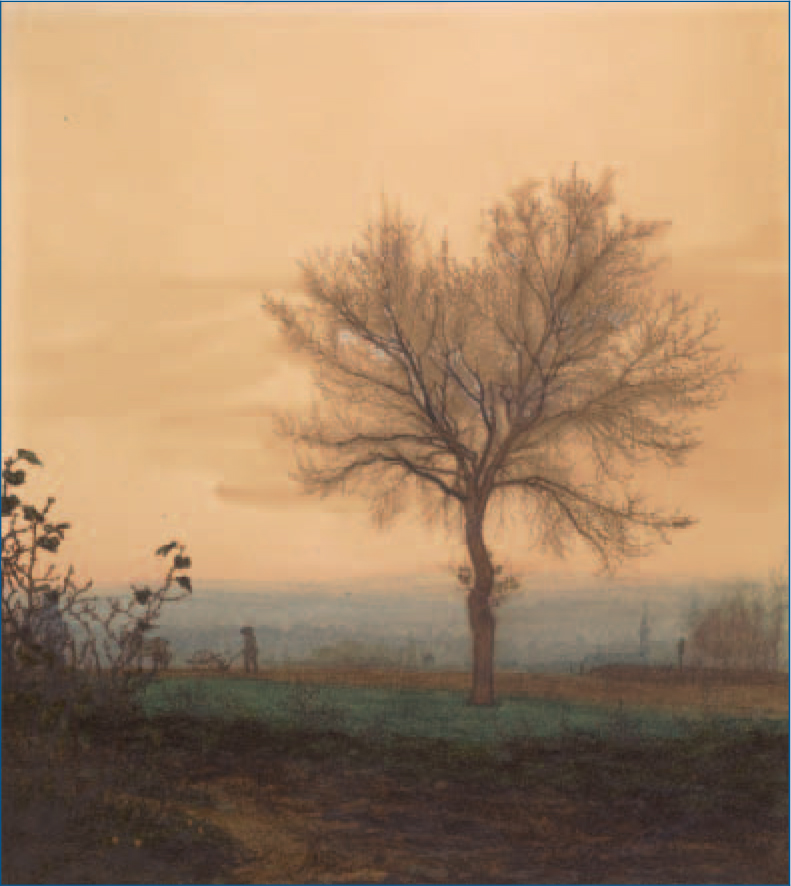Born in the outskirts of Paris in 1834, Léon Bonvin was the son of a policeman and a seamstress. There were numerous siblings from multiple marriages, and money was scarce. Léon’s strongest bond was with his older brother François. They shared a desire to draw and a precocious aesthetic sensibility. Apprenticed to a printer in his adolescence, François would give the younger Léon artistic advice for the remainder of his life.
Most of Léon’s earliest works were charcoal renditions of his austere surroundings. He would later work in graphite, pen and ink, and eventually in the watercolour medium, with which he would carve his niche. Oil painting was a rare activity for him, because he was rarely able to afford oil paints.
Though lacking in materials, Bonvin benefited from his elder brother’s guidance. François suggested that he study the Dutch masters and pay particular attention to their ‘meticulous realism and use of outline’. In time, the younger brother would employ sepia-toned ink outlines to produce his own ‘meticulous realism’ in the form of watercolours with startling, quasi-photographic effects.

Léon Bonvin (French, 1834–1866) Landscape with a Bare Tree and a Plowman, 1864. Pen and brown ink, watercolour, and gum Arabic, 18.1 × 16.2 cm.
The J. Paul Getty Museum, Los Angeles. Digital image courtesy of the Getty’s Open Content Program.
However, this stylistic innovation did little to enhance Bonvin’s overall quality of life. Forced to work tirelessly at his job as innkeeper, there was precious little time for the artistic vocation. Early morning and sunset were usually the only times at which he could practise his coloured magic.
The online art publication The Blue Lantern explores the psychodynamic elements of Bonvin’s Interior of a House with an Open Door. This painting has a very claustrophobic feel, which likely reflects its painter’s ongoing sentiments of ‘frustration’ and ‘confinement’. Though the painting, through its ‘open door’, includes a ‘glimpse of a wider world’, this glimpse is ‘obscured by blazing sunlight’.
The early 1860s saw Bonvin marry, start a family, and sink further into poverty. By January 1866 his financial situation had become dire. Carrying as many paintings as he could, he headed to Paris and approached an art dealer. ‘Too dark’, was the dealer’s response. Having been dismissed with these few words, the starving artist was sent on his way, not one franc the richer. Emotionally drained, Bonvin went to a hill that overlooked the plains of Issy. This view had inspired some of his most passionately painted watercolours.
Here, hours later, the painter was found hanging from a tree. If there was any good to come of this demise, it was that a posthumous charity auction of his works raised enough money to spare his family from utter destitution.



eLetters
No eLetters have been published for this article.